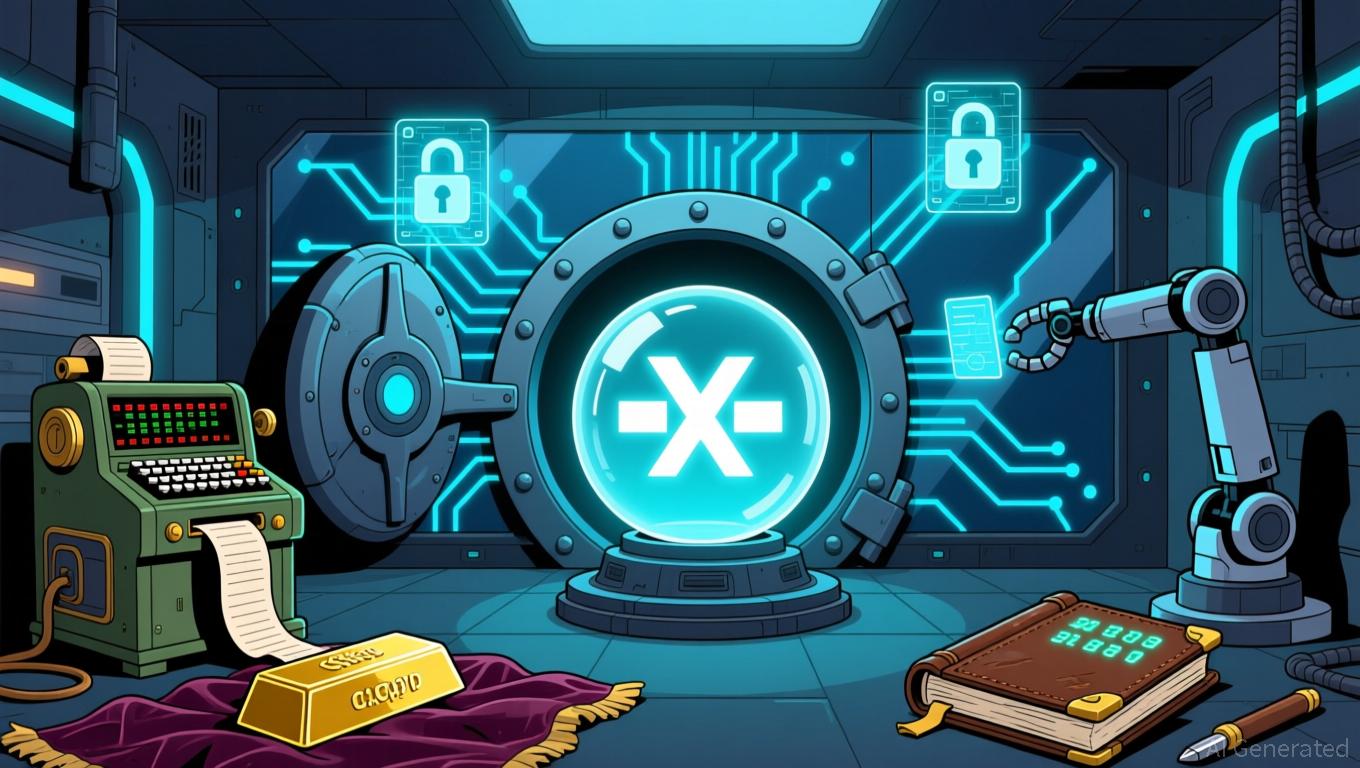ZK Atlas Enhancement: Driving On-Chain Expansion and Accelerating Layer-2 Integration
- ZK Atlas Upgrade (2025) introduces three core components—Atlas Sequencer, Airbender Prover, and zkSync OS—to solve blockchain scalability and cost challenges. - The upgrade reduces Ethereum gas fees by 90%, enables 70% cheaper transactions, and attracts $3.5B TVL, accelerating institutional adoption of ZK-based L2 solutions. - Market projections show ZK Layer-2 could reach $90B by 2031, driven by 60.7% CAGR growth and $15B in 2025 Bitcoin ETF investments into ZK projects. - Strategic investment themes in
Technical Breakthroughs: The
ZK
Atlas Stack
The ZK Atlas Upgrade unveils three essential elements that set new standards for layer-2 (L2) capabilities:
1. Atlas Sequencer: This advanced sequencer
2. Airbender Prover: Built as an open-source ZK virtual machine based on RISC-V, Airbender
3. zkSync OS: This modular operating system supports EVM compatibility and smooth interaction between ZK-powered L2 chains. By compiling a unified state transition program for both x86 (execution) and RISC-V (proving), it
Together, these advances tackle the "scalability trilemma" by optimizing throughput, security, and decentralization. For example,
Impact on Layer-2 Growth
The ZK Atlas Upgrade has fueled greater institutional interest in L2 technologies, thanks to three main drivers:
1. Capital Efficiency: With gas fees now
2. Interoperability:
3. Enterprise Readiness: Enhanced support for tokenizing real-world assets and compliance features has made ZK protocols a core component of institutional DeFi. For instance,
User Adoption and Market Trends
The ZK Atlas Upgrade has also transformed how users are onboarded by lowering entry barriers. Faster transaction finality (with confirmations in under a second) and decentralized identity tools are making blockchain technology more accessible to everyday users. Bitget’s report notes that the ZK token experienced a 50% price jump after the upgrade, fueled by
Market responses further affirm the upgrade’s significance.
Key Investment Insights
For those investing, the ZK Atlas Upgrade brings three main strategic considerations:
1. Protocols with Modular Design: Projects such as
2. Exposure to ZK Tokens:
3. Infrastructure Providers: Firms delivering compliance, privacy, and cross-chain settlement tools for ZK systems (such as Zeeve and Prividium) are poised to benefit as the ecosystem grows.
Risks and Obstacles
While promising, the ZK Atlas Upgrade is not without hurdles.
Summary
The ZK Atlas Upgrade is more than just a technical achievement—it represents a fundamental shift in blockchain scalability. By solving issues around throughput, cost, and interoperability, it sets the stage for ZK protocols to lead the next era of decentralized infrastructure. For investors, focusing on ZK ecosystems—especially those with modular frameworks, institutional collaborations, and strong token utility—offers a compelling opportunity to participate in blockchain’s future growth.
Disclaimer: The content of this article solely reflects the author's opinion and does not represent the platform in any capacity. This article is not intended to serve as a reference for making investment decisions.
You may also like
Hyperliquid (HYPE) Price Rally: On-Chain Liquidity Breakthrough and DeFi Market Revaluation Projected for 2025
- Hyperliquid's HYPE token surged amid BLP innovation, boosting capital efficiency via shared lending pools and reducing cross-protocol friction. - TVL grew 19.78% to $2.15B in 30 days, driven by $303B October trading volume and $1.3B HYPE buybacks tightening token supply. - Institutional adoption accelerates with 21Shares' HYPE ETF filing and SEC's crypto ETF fast-tracking, aligning with BlackRock's $50B IBIT success. - Technical risks persist (bearish patterns, $35.5 support level), but zk-KYC audits and
XRP News Today: SEC Grants Approval for XRP ETF as a Commodity, Sidestepping Security Status Debate
- SEC approves Franklin Templeton's XRP ETF (ticker EZRP), marking XRP's institutional legitimacy as a commodity asset. - The ETF, holding XRP via Coinbase Custody, avoids airdrops/forks and sidesteps SEC's security classification dispute over XRP. - Market sees it as a catalyst for institutional crypto adoption, with potential inflows mirroring Bitcoin/ETH ETF success. - XRP's 11% post-approval price drop and regulatory uncertainty highlight risks despite 0.19% competitive fee structure.

Bitcoin Updates: Amid Bitcoin’s Plunge, Saylor’s Company Amasses $835M, Bucking the Market Sell-Off
- Michael Saylor's Strategy Inc. bought 8,178 BTC ($835.6M) despite Bitcoin's 25% drop, boosting holdings to 649,870 BTC ($61.7B). - The purchase, funded by perpetual preferred stock sales, reflects confidence in Bitcoin's long-term value despite market selloffs and ETF outflows. - Saylor's firm maintains a conservative leverage ratio (8B debt vs. 61B BTC) and claims resilience against multi-year price collapses. - Institutional Bitcoin adoption persists as Harvard allocates $443M to crypto ETFs, though St

Prisoner Exchange Approaches Amid Intensified Russian Energy Attacks on Ukraine
- Ukraine and Russia near agreement to resume large-scale prisoner exchanges, targeting 1,200 Ukrainian captives by November, mediated by Turkey and the UAE. - Russia escalates energy infrastructure attacks, including Odesa solar plant strikes, while Ukraine retaliates with strikes on Russian oil refineries and drone facilities. - Trump administration proposes 28-point peace plan for Ukraine, inspired by Gaza ceasefire model, with unclear details on territorial concessions and NATO membership. - Kyiv secur
